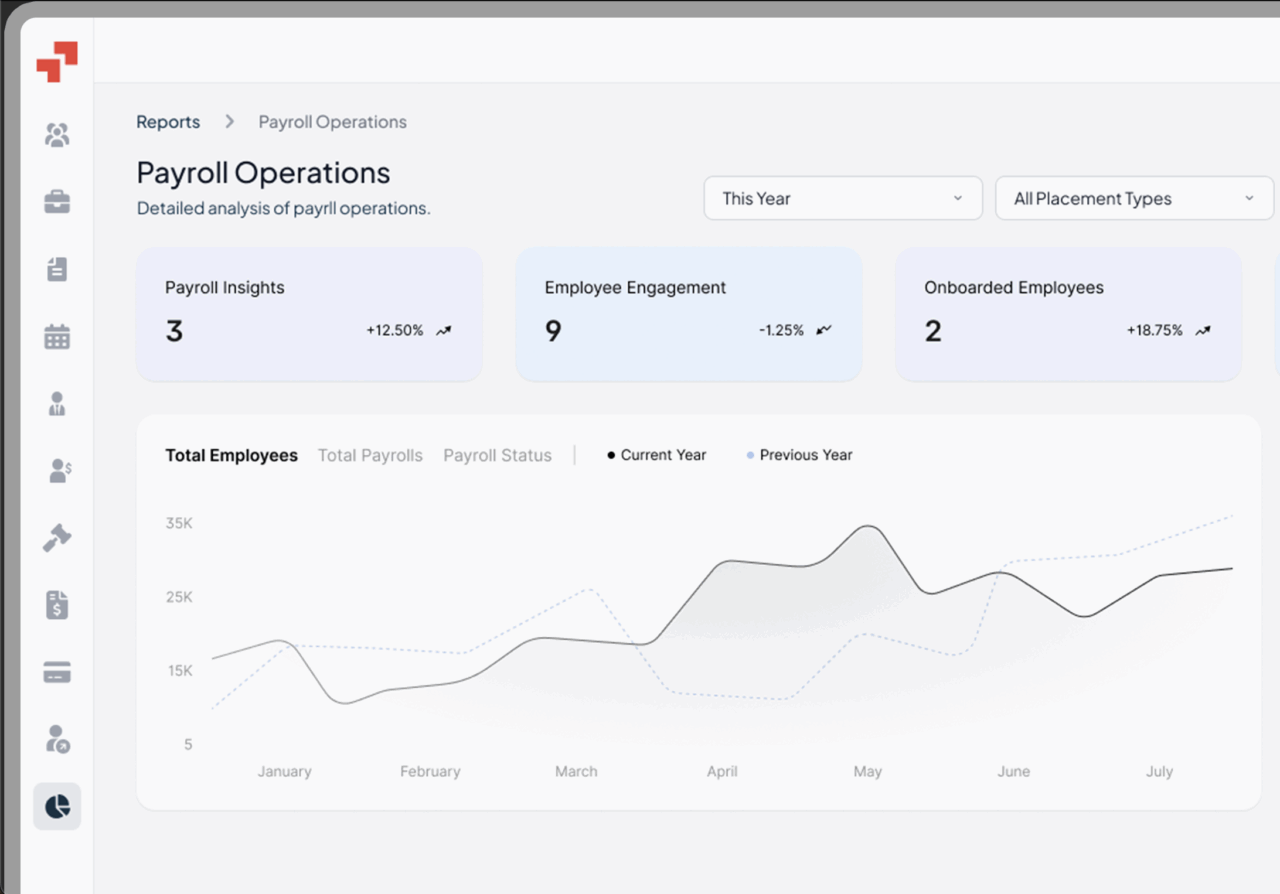Global Workforce GlossarySupplemental Pay
For executives leading across the U.S., U.K., and Europe, compensation structures must align with compliance, transparency, and talent retention goals. Understanding why supplemental pay is important is crucial, as it plays a key role in attracting and retaining talent, boosting motivation, and supporting overall business performance.
One area requiring precision is supplemental pay, which represents additional income for employees, such as bonuses, overtime, and tips, and is a complex yet vital component of payroll management that directly affects taxation, motivation, and compliance outcomes across jurisdictions.
Table of Contents
- What is co-employment?
- What are co-employment laws?
- Why is co-employment a risk?
- What are co-employment rules
- Co-employment do’s and don’ts
- How does co-employment work?
- What is the difference between co-employment and joint employment?
- Co-employment vs PEO
- Co-employment vs employee leasing
- Is co-op considered a full-time employee?
- Is it illegal to work for two jobs in the same industry?
- Co-employment examples
- Practical Case Study Example
- PamGro and Co-employment: Your Global Partner
What is supplemental pay?
Supplemental pay refers to all employee compensation that falls outside regular wages. Payments that are considered supplemental income include bonuses, commissions, severance, overtime, back pay, and awards, as they are taxed differently from standard earnings.
The IRS defines it as any payment made in addition to base salary, such as bonuses, commissions, and severance. In the U.K., HMRC similarly treats these payments as “irregular earnings” subject to PAYE tax and National Insurance. It is important to understand the distinction between supplemental and regular wages, as each is subject to different withholding methods and tax rules.
What does supplemental pay mean on a paycheck?
On a paycheck, the amount of supplemental pay the employee receives appears as a separate entry from regular wages. Employers typically label it as “bonus,” “commission,” or “retroactive pay.”
This separation ensures correct withholding taxes because such payments are taxed differently than fixed earnings, following IRS Publication 15-A and HMRC’s Real Time Information (RTI) reporting standards. Supplemental pay may also be issued in a different pay period than regular wages, providing flexibility outside the standard payroll cycle.
How does supplemental pay work?
When issuing supplemental pay, employers must decide between two tax treatments. The IRS allows the aggregate method, combining it with regular wages for standard withholding, where different tax rates may apply depending on the total income.
Alternatively, the flat rate method applies a fixed 22% rate, known as the supplemental tax rate, which is a type of supplemental tax specifically for supplemental income such as bonuses and commissions.
In Europe, similar principles apply; countries like Germany and the Netherlands also apply higher withholding to one-off payments. Withheld income tax is calculated based on the chosen method, ensuring proper tax compliance for supplemental wages.
What qualifies and does not qualify as supplemental pay?
Each qualifying payment is a type of supplemental pay, such as bonuses, commissions, severance pay, awards, retroactive increases, and stock-related income. Non-qualifying payments are those forming part of the employee’s fixed contractual salary.
Both the IRS and HMRC draw this line clearly to prevent employers from misclassifying regular earnings as variable incentives. All of these qualifying payments are considered supplemental wage payments.
Supplemental wages vs. regular wages
Regular and supplemental wages are key components of employee compensation, each serving different purposes.
Regular wages are the predictable, periodic payments tied to contracted hours or salary. Supplemental wages are irregular or non-recurring payments tied to performance, tenure, or specific business events.
U.S. and U.K. payroll authorities categorise them separately to ensure accurate taxation and reporting, and the way an employer pays these wages can affect both taxation and how they are reported on tax forms.
What are the different types of supplemental pay?
Common supplemental pay types include performance bonuses, sales commissions, overtime pay, vacation pay, overtime premiums, severance, signing bonuses, relocation allowances, retroactive pay increases, and payouts for unused leave.
Some employers also include taxable fringe benefits and stock option income. Both IRS Publication 15 and HMRC manuals classify these as supplemental or irregular wages for withholding purposes. All of these are considered forms of supplemental payments.
What is the standard rate or tax rate for supplemental pay?
In the U.S., supplemental tax rates apply to supplemental pay such as bonuses and commissions. The federal flat withholding rate for supplemental pay is 22%, while payments exceeding $1 million are subject to a 37% federal income tax withholding rate.
These rates are part of the federal income tax system, and the applicable tax bracket determines the marginal rate when supplemental income is combined with regular wages.
In the U.K., HMRC treats bonuses and commissions as subject to standard income tax and National Insurance contributions. Within the EU, supplemental income is taxed under national income rules, often at progressive marginal rates. Employers in the U.S. are also responsible for federal unemployment tax on supplemental pay.
Why is supplemental income taxed higher?
Supplemental income attracts higher withholding to help manage tax liability and avoid underpayment of taxes. The IRS’s fixed rate simplifies compliance for lump-sum payments that cannot be spread across pay periods.
Supplemental income is generally taxed at higher rates than regular wages, and the withholding rates may vary depending on the type and amount of supplemental pay, such as bonuses or commissions. Both employers and employees should be aware of the tax implications of supplemental pay, as these can affect payroll processes and overall tax outcomes.
Similarly, European tax authorities use higher provisional rates to align with end-of-year reconciliation and reduce employer liability risks.
How much tax is applied to bonuses or supplemental income?
Employers must withhold federal income tax from bonuses and supplemental wages. The amount of taxes withheld may differ depending on whether the payment is combined with regular wages or paid separately.
Bonuses and supplemental wages paid separately are typically withheld at 22% federally in the U.S., plus Social Security and Medicare. When combined with regular wages, withholding depends on the employee’s total tax brackets.
Withholding calculations may also reference the previous pay period to determine the correct amount to withhold. In the U.K., bonuses are taxed through PAYE at the employee’s marginal rate, often 20% to 45%.
How can employees reduce the tax impact on supplemental pay or bonuses?
Employees can minimize withholding by contributing more to pre-tax retirement accounts, deferring part of the bonus, or adjusting their Form W-4. In the U.K. and EU, tax-efficient options include pension contributions, charitable deductions, or structured deferred compensation schemes. Employers should also communicate payment timing to support effective planning.
Employees should review their tax forms to identify taxable and non-taxable income and ensure accurate tax reporting for all supplemental pay. For complex tax situations, it is recommended to seek professional advice to ensure compliance with all regulations.
What are examples of supplemental wages?
Examples include a $20,000 performance bonus, $5,000 sales commission, $8,000 relocation incentive, or a severance package after layoff. These supplemental wages are paid in addition to an employee’s regular wages and are separate from an employee’s regular income. The payment schedule for supplemental wages may differ from regular pay, as they can be paid as lump sums or on a non-standard schedule rather than the fixed payroll period for regular wages. Stock option exercises and back pay awards also qualify.
Each type carries unique reporting obligations Form W-2 in the U.S. as required by the Internal Revenue Service (IRS) and Internal Revenue Service IRS, Full Payment Submission (FPS) under HMRC, or income declarations under EU tax regimes.All supplemental wages are included in taxable income and are subject to Medicare taxes, Medicare tax, and Social Security tax.
In contrast, rental income is not considered supplemental wages; it is taxed as ordinary income and reported on Schedule E. Self-employment income may be subject to self-employment tax, and individuals may need to pay self-employment tax on such earnings. Note that Supplemental Security Income is a government benefit and is not considered taxable supplemental wages.
Example
Consider a San Francisco-based SaaS firm awarding a $40,000 annual bonus to its senior engineer in London. The U.S. entity, through its Employer of Record partner, processes the payment as supplemental pay – taxed at the 22% federal rate. In the U.K., HMRC treats it as irregular pay subject to PAYE and National Insurance. Coordinating timing and reporting across both systems ensures compliance and transparency while maintaining the employee’s net compensation expectations.
FAQs
Is supplemental pay mandatory for employers?
No. While it is a common tool for retention and motivation, neither U.S. federal law nor U.K. or EU directives require it. However, once offered, employers must comply with all tax withholding and reporting obligations.
Who reports supplemental pay for tax purposes?
Employers report supplemental pay through their payroll systems. In the U.S., it appears on Form W-2 and is declared in Form 941 filings. U.K. employers must include it in their PAYE submissions, while EU firms follow national reporting obligations aligned with the European Commission’s employment income guidelines.
What are the benefits and drawbacks of supplemental pay?
Benefits include increased performance motivation, flexibility in reward systems, and competitive retention. Drawbacks include higher taxation, administrative complexity, and potential confusion if not communicated clearly in contracts or payslips.
What does not qualify as supplemental pay under tax rules?
Fixed salary, hourly wages, and recurring allowances are excluded. Only irregular, non-contractual, or performance-linked payments qualify as supplemental under IRS and HMRC frameworks.
What are the compliance considerations for employers managing supplemental wages?
Employers must correctly classify payments, choose the appropriate withholding method, monitor thresholds (such as the $1 million U.S. limit), and maintain transparent documentation. Failure to do so can result in penalties or back-tax assessments during audits.
Hire the Best Talent, Anywhere






